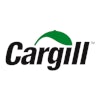Last year took the world's financial markets to the brink. Trillions of dollars of real estate transactions, OTC credit swaps and other derivatives couldn't be valued; managers didn't know what their portfolios were worth, or how to exit their positions.
Grain merchandisers had it easy by comparison. Deep, liquid futures markets let you quickly and easily lay off price and spread risk. Everything is marked to market daily for complete transparency. Hedges are exchange-cleared, where the CME Clearing Corporation becomes your counterparty and adjusts your account daily for gains or losses. With global finance swirling into chaos, agriculture largely conducted business as usual.
But two things were missing before now:
- A way to hedge basis risk
- A way to fine-tune managing spreads
In March 2009 the CFTC authorized clearing of OTC agricultural basis and calendar swaps using the CME Clearport® electronic platform. Approval quickly followed for the June 1 CBOT/CME launch of trading in put and call options on futures spreads in grains and the soy complex (excluding rice and oats).
Now grain merchandisers have additional tools to manage basis, price and spread risks in these turbulent markets while staying within the safety net of exchange-cleared products!
Swaps 101
This all sounds wonderful, but what are swaps and how can we use them? In regulatory talk, a swap is an agreement to use a derivative contract to exchange or "swap" price risks between two instruments and includes an exchange of cash flow.
In plain English, a traditional swap is like a hedge. Two people might agree they will ‘swap' money based on the changing value of some agreed-upon benchmark. An ethanol plant could buy a swap from a financial firm to fix the price of corn for 12 months, using an agreed-upon price of $4.00, based on December 09 CME corn futures, to be settled in monthly increments on an agreed upon day each month. If December corn futures are above $4.00 on that date, the swap seller sends money to the ethanol plant. If December futures are below $4.00, the ethanol plant sends the difference to the financial entity.
The swap protects the ethanol plant's corn cost at $4.00 (futures) plus basis. The plant still needs to buy physical corn at some price/basis; the swap gain or loss determines the final net raw material cost. The major risk to both parties is whether each will be able and willing to meet any financial obligations. The plant is also tied to the original counterparty and cannot exit the swap early unless both sides agree.
Exchange-cleared agricultural swaps
The CME already clears ethanol swaps but now clears ag calendar swaps, which manage price risk, and basis swaps which manage basis risk. These swaps are financial transactions — they are not cash grain contracts. The CME's Clearport platform is used only for the counterparties to enter the details of their trade. From that point the CME becomes the counterparty to each side.
These swaps are not traded in CME pits, nor on Globex. Swap participants work out their terms directly over the phone, via e-mail, or through a third-party broker. CME has standardized some swap terms, however, to facilitate clearing:
- 5,000-bushel increments; 1/4¢ price ticks
- Standardized contract periods and expirations
- Standardized settlement process at maturity.
E-C swaps eliminate some issues and risks of privately held swaps. The benefits include:
- Financial integrity of CME Clearing virtually eliminates counterparty credit risk
- Cross-product margining with your exchange-traded futures and options can reduce capital requirements for initial and ariation margin on other hedges
- Transparency — daily mark to market
- Liquidity — you can exit your swap by finding another party that agrees to the terms
- Parties to the swap don't need to know each other or have any business connection
- Eliminates need for time-consuming ISDA (Int'l. Swap Dealers Assn.) documentation
Getting started:
- Swap participants must each have an active futures account with a clearing firm in which your swap trades will appear
- All swap buyers and sellers must also register initially with CME/NYMEX Clearport®. (www.nymex.com/cp_start.aspx)
- All ag hedgers who wish to buy or sell exchange-cleared swaps to manage business risks must have a federally required minimum net worth of $1 million
Grain veterans from the mid-1980s will remember when the government disposed of surplus CCC inventories by transferring them to farmers in the form of Payment in Kind certificates in lieu of paying cash for farm program benefits. Farmers could redeem the certs for physical grain at a warehouse (and sell the grain) or sell the certificate in a secondary market -- "Over the Counter."
Traders quickly caught on to arbitrage opportunities and a thriving secondary market arose with certs trading freely at varying premiums to face value. The cert buyer and seller had no lasting relationship and were often far apart geographically. Shipping the certs to the buyer's bank controlled counterparty risk.
Basis Swaps
Trading the new basis swaps reminds me of trading in PIK certificates. The functions of swaps and certs are different, of course, but the process is similar: Unrelated parties execute a financial transaction. They don't have to know each other, and why each is doing the transaction is irrelevant to the other party.
Basis swaps offer a way for buyers or sellers of cash grain to hedge basis risk for a negotiated time slot, without being committed to a cash grain contract. The basis swap benchmark must be one of the six Corn Belt regional cash Indices CME has approved: 1) Southern Minnesota, 2) Eastern Nebraska, 3) Eastern South Dakota, 4) Northeast Iowa, 5) Northwest Iowa, or 6) Southern Iowa. The daily settlement of each index is compiled by DTN using elevator, terminal and processor cash bids within each region.
The basis-swap buyer and seller both retain some basis risk — any amount their local cash basis doesn't track with the regional basis index designated in the swap at settlement time.
Final (basis) settlement will be calculated as the average of the Regional Index basis over the final five trading days of the swap.
Finding counterparties for swaps won't be as hard as it sounds. Brokers will search out willing buyers and sellers. Market-makers will watch for dislocations, just as arbitragers watched for CCC price dislocations in the old PIK days.
Basis swap example
A feed mill that wants to own cheap corn basis might find it hard to buy corn from farmers. They could "hedge" the basis by buying a basis swap and buy physical corn when the swap matures. If basis rises, the inventory basis will cost more but the basis hedge — the swap — will pay the mill the amount the underlying basis index rises.
Or assume basis in your general area is strong for summer and you would like to sell inventory. Assume that your main market is an ethanol plant that isn't ready to buy yet or you're concerned whether that buyer is financially sound. You could sell a basis swap to protect against basis potentially weakening.
You don't have to be located in the Upper Western Corn Belt to use basis swaps. What is important is whether basis changes in the Index region reflect basis moves in your area. If your correlation is sufficiently high, then a basis swap may remove enough of your risk to make it an effective, if not perfect, hedging tool.
Calendar swaps
A feedlot that wants to lock in the (futures) price of corn for the next six months could buy a corn calendar swap to protect against rising corn prices. The feedlot still has to eventually buy real corn from suppliers. The feedlot's final local cash prices depend on their respective local basis/cash price plus the gain or loss from the swap.
All cleared calendar swaps will settle on the last business day prior to the designated swap maturity month.
- June 2009 corn swaps expire on May 29, 2009 using the settlement price of July 09 corn futures;
- July 2009 swaps expire on June 30, also using the settlement price of July 09 futures
The final swap settlement price at expiration is calculated as the average of the cumulative futures settlement prices during the expiration month (May 09 for June 09 swaps) divided by the number of trading days. Settling at a monthly average price is attractive for many end users; futures limit them to a single-day's settlement price per 5,000 bushels.
The other new kid
On June 1 the CBOT/CME launched trading in put and call options on spreads in grains and the soy complex (excluding oats and rice). Spread options let grain merchandisers set a floor early on carrying charges for example, rather than locking in a final spread. Spread options will trade by open outcry in the pits and electronically on Globex.
- Listings: nearest 3 spreads, plus an old/new crop spread (e.g., July/Sept, Sept/Dec, & Dec/March corn + July9/Dec9)
- Exercise will be European style (only at expiration)
- Spread option position(s) can be liquidated prior to expiration by either longs or shorts.
- Strike price intervals and daily price limits (expandable after a limit session)
• Sbns - 1¢ SP, - $1.40 limit
• Meal - 50¢ ton SP, - $40/ton limit
• Wheat - 1¢ SP, - $1.20 limit
- Strike prices reflect the value of the front month price minus the deferred month price:
- Carry-spread strikes will be a negative value; e.g., July/Sept corn at a 9¢ carry would show as a -9 SP )
- Inverse strikes will be a positive value
- Exercise/assignment will create futures contract(s) equal to the settlement price of the front month of the spread minus the option Strike Price (differential) of the spread
- Position created at exercise for the option buyer (long):
- Calls: buyer receives long nearby futures + short the deferred month
- Puts: buyer receives short nearby futures + long the deferred month
- Position assigned to the option writer (short):
- Calls: seller receives short nearby futures + long the deferred month
- Puts: seller receives long nearby futures + short the deferred month
Here are two basic spread strategies and the option position you would use to protect the strategy include:
It's easy to take for granted the value of our futures exchanges. But their financial safeguards, transparency and liquidity allow grain firms to efficiently manage risk even in turbulent markets. We welcome the new kids on the block: swaps and spread options.
| Name & option position | |
| Elevator wants to set a minimum carrying charge spread for inventory | "Bull spread": Buy a spread call option |
| Expect a carry to widen or an inverse to lessen. | "Bear spread" Buy a spread put option |


















